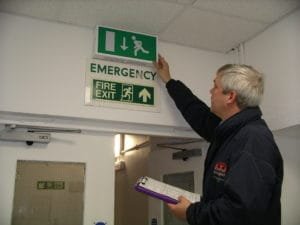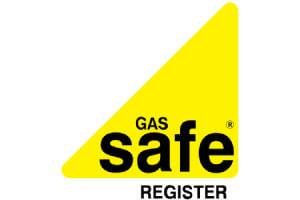
To ensure the safety and compliance of any facility, performing an effective emergency light test is crucial. This process begins with a thorough review of all relevant documentation and a meticulous physical inspection of the lighting fixtures. The subsequent steps involve simulating a power outage to evaluate the functionality and endurance of the emergency lights. These actions not only affirm the operational integrity of the safety systems but also identify potential areas for improvement. As we proceed, we will explore the nuances of each testing phase and discuss how regular assessments can significantly enhance emergency preparedness. The insights provided will underscore the importance of this routine yet critical procedure.
Table of Contents
Key Takeaways
- Conduct a physical inspection of all emergency light fixtures to check for damages and secure mountings.
- Simulate a power failure to test the operational readiness and illumination duration of the emergency lights.
- Record data on light performance, noting any deviations or failures during the test.
- Review all gathered information post-test to assess if additional maintenance or repairs are needed.
- Ensure frequent testing, performing short monthly checks and a comprehensive annual test to meet safety standards.
What Is an Emergency Light Test and Why Is It Important?
An emergency light test, a crucial procedure in safety management, ensures that illumination systems function correctly during power outages or other emergencies. This test is integral to maintaining fire safety compliance, particularly within the framework of the fire safety certificate UK standards.
Emergency lighting systems are designed to activate automatically when the main power supply is interrupted, providing illumination that can guide occupants to safety.
Performing regular emergency light tests is mandated under various safety regulations to uphold a valid fire risk assessment certificate. These tests verify that emergency lights are not only operational but also capable of providing adequate illumination for the required duration during an evacuation. The process involves simulating a power failure and observing the activation and functionality of all emergency lighting fixtures.
A thorough emergency light test is also a critical component of the fire safety inspection UK protocols. It ensures that the lighting system adheres to current safety standards, helping to prevent potential hazards during unforeseen circumstances.
Failure to conduct these tests can lead to non-compliance issues, posing serious risks to building occupants and possibly impacting the validity of fire safety documentation.
Step-by-Step Guide: How to Perform an Emergency Light Test Effectively
To ensure the effective performance of an emergency light test, begin by meticulously preparing a comprehensive testing plan that outlines all necessary steps and safety measures. This plan should detail each phase of the testing process, identifying responsible parties and the tools required for each task.
- Documentation Review: Verify that all emergency lighting systems are documented with up-to-date schematics and previous test results. This ensures that testers are aware of any historical issues and the layout of the installation.
- Physical Inspection: Conduct a thorough visual and physical examination of all emergency lighting fixtures and related components. Check for any signs of damage or wear that could affect performance, ensuring that all units are securely mounted and that their charge indicators are functioning.
- Functional Testing: Simulate a power failure to activate the emergency lighting and observe its operation. Each light should illuminate promptly and must sustain operation for the duration specified by safety regulations. Record the performance of each unit, noting any deviations from expected functionality.
Conclude the test with a review session to analyze data, discuss findings with facility management, and schedule any necessary repairs or adjustments.
This systematic approach ensures reliability and compliance with safety standards.
How Often Should Emergency Lighting Be Tested in the UK?
The frequency of emergency lighting tests in the UK is regulated under the British Standards (BS 5266-1), which stipulates that monthly and annual tests are necessary to ensure compliance and functionality.
Detailed adherence to these standards is crucial for the safety of building occupants and the legal compliance of the facility managers or owners.
Monthly tests are intended to verify the operational readiness of the emergency lighting system. This involves a short functional test known as a ‘flick test’ to ensure that each emergency light switches on via its battery when the main power supply fails. This test should last enough time to confirm functionality but not deplete the battery, typically around 30 seconds.
Annually, a more comprehensive test is required. This involves simulating a failure of the normal lighting supply for the full emergency duration, which is usually three hours, to ensure that emergency lights remain operational throughout this period.
This test checks the battery’s capacity and the luminaire’s ability to maintain adequate lighting levels, ensuring that all exit routes remain clearly visible and illuminated during an emergency.
Records of these tests should be meticulously maintained as part of the building’s safety documentation, ensuring that any failures are promptly addressed and rectified to maintain stringent safety standards.
Legal Responsibilities for Landlords – Emergency Lighting & EPCs
Landlords bear significant legal responsibilities concerning the provision and maintenance of emergency lighting systems, as well as ensuring that their properties meet the required standards for Energy Performance Certificates (EPCs).
These regulations are designed to safeguard tenants and ensure properties are energy-efficient and safe in emergencies. Non-compliance can lead to legal penalties, including fines and restrictions on property rental.
Key responsibilities include:
- Regular Testing and Maintenance: Landlords must ensure that emergency lighting systems are tested regularly according to BS 5266-1 standards, which recommend monthly ‘flick tests’ and annual full-duration tests to verify functionality during power outages.
- Documentation and Records: Documentation of all tests, maintenance, and repairs must be meticulously maintained. These records should be readily available for inspection by regulatory authorities to prove compliance.
- Installation and Compliance: Proper installation of emergency lighting must comply with building regulations and standards. This includes correct placement of lights to cover all escape routes and high-risk areas adequately.
Adhering to these regulations not only ensures legal compliance but also enhances the safety and security of building occupants, ultimately protecting the landlord’s investment and reputation in the property market.
The Connection Between Emergency Lighting and Your EPC Rating
Understanding the impact of emergency lighting on a property’s Energy Performance Certificate (EPC) rating reveals its broader significance beyond safety during emergencies. EPC ratings, which assess buildings on their energy efficiency, can be influenced by the choice and implementation of emergency lighting systems.
Efficient emergency lighting solutions contribute positively towards a higher EPC rating by minimizing energy consumption without compromising safety.
Emergency lighting systems, as required by safety regulations, must operate reliably in a power outage. However, the energy efficiency of these systems varies significantly based on the technology employed. LED-based emergency lights, for instance, are favored for their lower energy consumption compared to traditional incandescent bulbs.

The integration of smart control systems that ensure lights are only activated when necessary can further enhance energy efficiency.
Furthermore, modern emergency lighting systems can be integrated with central energy management systems, allowing for better monitoring and control of energy usage. Such integration not only ensures compliance with safety standards but also aids in achieving a more favorable EPC rating by reducing overall energy demand.
Property owners should consider these factors when installing or upgrading emergency lighting systems, as they contribute to both safety and energy efficiency, reflecting directly on the EPC rating.
How Much Does an Energy Performance Certificate Cost?
Considering the various factors that influence the cost, obtaining an Energy Performance Certificate (EPC) can vary in expense depending on the size and complexity of the property, as well as the location. Typically, the cost of an EPC ranges from £60 to £120, but in certain areas or for particularly large or complex properties, this price can increase significantly.
Key factors affecting EPC costs include:
- Property Size: Larger properties have more spaces to assess, which can increase the time and effort required by the assessor, thereby raising the cost.
- Property Type: The complexity of assessing a property, such as a commercial building with advanced heating and cooling systems, requires more specialized knowledge and time, impacting the price.
- Geographical Location: Costs can also vary based on the assessor’s travel expenses and the regional differences in competitive pricing.
It is crucial for property owners to understand that while cost is an important factor, the expertise and thoroughness of the assessment are paramount for ensuring safety and compliance with energy performance standards.
A detailed and accurate EPC not only helps in improving energy efficiency but also significantly affects the operational costs and environmental impact of a property.
Finding an Emergency Light Testing or EPC Service Near You
Identifying a reliable emergency light testing or EPC service in your area requires careful consideration of several key factors.
First and foremost, it is paramount to evaluate the certifications and accreditations held by prospective service providers. Accreditation by recognized standards bodies, such as the National Inspection Council for Electrical Installation Contracting (NICEIC) or the Electrical Contractors’ Association (ECA), ensures that the service adheres to stringent safety and quality guidelines.
Additionally, experience in the field acts as a significant indicator of reliability. Providers with extensive track records are more likely to understand the nuanced requirements of different building configurations and can offer tailored advice on compliance with current building regulations and safety standards.
Another critical aspect is the technology and tools utilized by the service provider. Modern, up-to-date equipment not only increases the efficiency of testing but also enhances accuracy, ensuring that all emergency lighting systems function optimally in actual emergency scenarios.

Lastly, consider the service flexibility and customer support offered. Providers that offer comprehensive support and are willing to adapt to specific client needs typically deliver more satisfactory service outcomes.
Engaging with local forums and reading reviews can also provide insights into the provider’s reputation and reliability.
Frequently Asked Questions
Can Emergency Lights Be Tested Without Professional Help?
Yes, emergency lights can be tested without professional help, provided one follows the manufacturer’s guidelines and safety protocols. Regular testing ensures functionality during power outages and is crucial for safety compliance.
What Happens if Emergency Lights Fail During Testing?
If emergency lights fail during testing, it indicates potential component malfunction or power supply issues, necessitating immediate professional inspection and repair to ensure compliance with safety regulations and readiness for actual emergency conditions.
Are There Different Types of Emergency Lights for Various Buildings?
Yes, different types of emergency lights are designed for various buildings, including standard, self-testing, and sustained models, each tailored to specific building codes, occupancy levels, and safety requirements to ensure optimal functionality and compliance.
How Do Power Outages Affect the Testing Process?
Power outages can impede routine emergency light testing by disabling the primary power source, necessitating reliance on manual simulation or battery power to ensure the system’s operational integrity and compliance with safety regulations.
Can LED Bulbs Be Used in Emergency Lighting Systems?
Yes, LED bulbs can be utilized in emergency lighting systems due to their energy efficiency, long lifespan, and reliable performance under varied conditions, making them ideal for ensuring safety during power outages or emergencies.
Conclusion
In conclusion, conducting thorough emergency light tests is paramount for ensuring safety in buildings. Adhering to prescribed testing frequencies and guidelines, including compliance with legal obligations, guarantees that emergency lighting systems function optimally during power outages. Regular assessments, coupled with professional EPC evaluations, enhance the safety and energy performance of properties. Landlords and facility managers must prioritize these tests and maintain accurate records to uphold safety standards and regulatory compliance.








